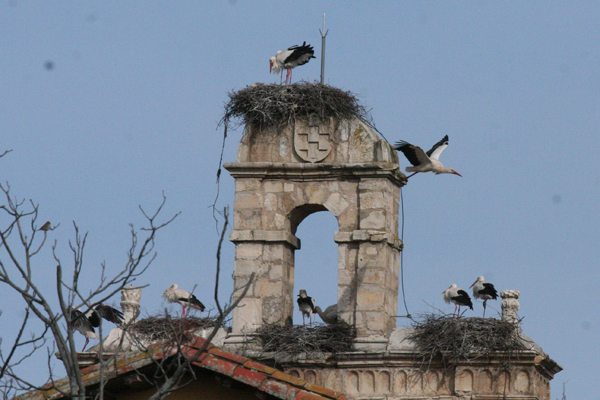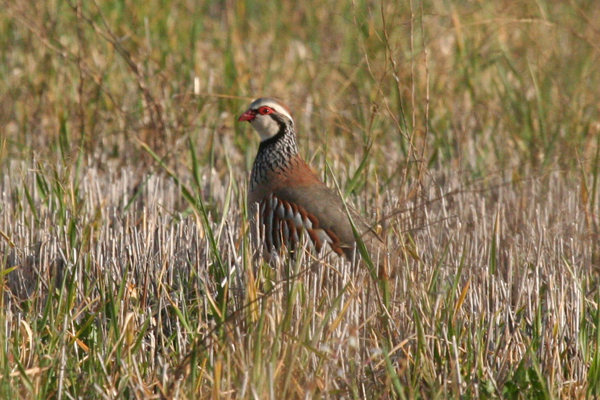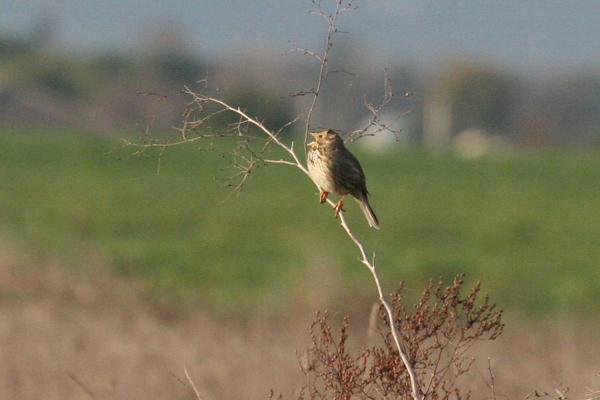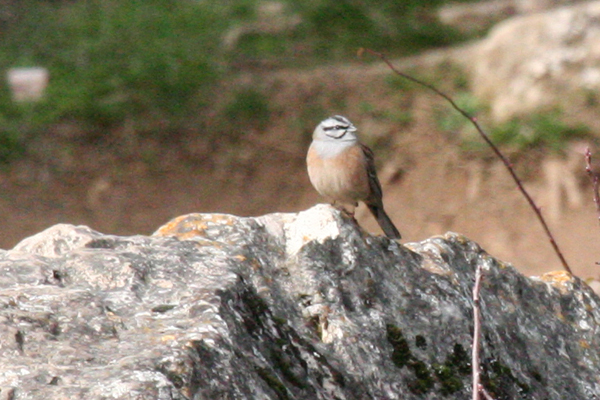On March 8, 2011 at the end of a two week self-guided tour of Spain and Portugal with my wife and 2 family members, I hired bird guide John Muddeford for one day of birding in the Madrid area. John lives near Madrid. He is an experienced Spanish bird guide and speaks fluent Spanish and English. The day in the field with John was the icing on the (very nice) cake for me, and my wife enjoyed it also.
Before giving an account of the birding, I want to note that this was my first visit to Spain and Portugal. Because there were four of us travelling together, a rental car turned out to be the least expensive and most efficient method of travel. We rented our car at the Madrid airport after our first 4 days in Madrid, Escorial and Toledo, and during the next 10 days we drove to Barcelona, Granada, Seville, Porto, Lisbon and back to Madrid, about 2500 miles. We avoided driving in the cities as much as possible, by parking the car and using the excellent public transportation systems. The highways in both Spain and Portugal are first class. Driving on the Spanish highways was very comfortable. The driving in Portugal was a bit fightening at times because many drivers greatly exceeded the posted speed limits. This required constant, extraordinary attention to what was coming from behind. In a week or two, when all the photographs have been reviewed, I will begin posting my observations and my wife’s photographs of the Spanish and Portuguese attractions that we visited.
Before leaving for Spain I emailed to John Muddeford a list of the species of birds that would be new to me and that appeared from my old and outdated European Field Guide to be findable in the Madrid area in early March. He diligently culled the list and added a few others that he thought might be of interest. It boiled down to about 30 potential new species at that time and place. We actually tallied about 85 species for the day, of which 25 were on my “new” list, and a couple of more new ones were added that were not on the list. For a more complete list of what we saw see John’s report on his website, [email protected].
Perhaps the most iconic birds for me were the White Storks. I had never seen one before the trip and ended it having seen well over 100. These big birds are apparently doing well in Europe. For centuries residents of many European countries have considered the presence of storks nesting on their houses, windmills or outbuildings to be a sign of good luck. Because of their favorable public image, and possibly also because they do not, I was told, taste good, they have managed to maintain a large population. How they manage to keep their great nests attached to the tops of utility poles and other high vantage points, I do not know.

Other birds high on my list were Great Bustards and Little Bustards. Our first sighting in this category was of a Little Bustard, flying across a green (winter wheat?) field at quite a distance. The white in its wings made it quite apparent that it was what it was. This was the only Little Bustard we saw. The Great Bustards were a different story. Surprisingly, they were fairly numerous and very visibile on the farm fields east of Madrid. We counted at least 35. I am surprised that these big game birds have survived the continuing encroachment of people into their habitats.

As we finished looking at our first flock of Great Bustards, two Red-legged Partridges came walking close by our car. The grass was a bit too tall to see their most prominent feature, their bright red legs, but they are a very beautifully patterned bird nonetheless.

A very plain bird that I have seen mentioned in English literature but never before seen, is the Corn Bunting. These tame little birds were present in great numbers, often singing along the fence rows or from exposed, weedy perches in the farm fields.

Although Rock Buntings were not new for me, they were colorful and very accommodating for my photographer.

Spain is home to by far the greatest variety of birds to be found anywhere in Europe. While early March was a good time for us to explore the excellent architecture, historical sites and art museums, it was not the best time to find the many migrating and summer resident birds of Spain. Moreover, the Madrid area is just one of several areas where many different species can be found. For those and other reasons, including the friendly people, fine food and wine, reasonable prices, beautiful and diverse scenery, and pleasant weather, I plan to return to Spain later this spring for a solid week of birding, with John’s guidance, outside the Madrid area. I hope to see 60 or so new species, which will, I think, be enough to satisfy my quest for birds in Europe. And who knows, I and my trusty mount, Rocinante, (did I mention that I plan to travel by rented horse?) may even tilt at a windmill somewhere in La Mancha.

Great to see pictures from the trip. Looking forward to seeing and hearing more about it!